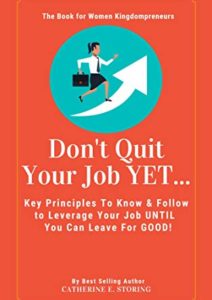As a stylist and coach I get asked all the time: “Catherine, what should I wear to sales and business meetings”. I love answering questions about style in business; however, this is an issue that goes deeper than wearing the right shirt or jacket.
How many times have you found yourself trying to make a sale — just to get shut down? The product is not the problem, you believe in your product and what it can do for your customer. Timing or price are not the problem either. You have perfected your pitch, yet your customers are not buying.
What is the problem? I hate to break it to you but your sales suit is holding you back. The suit is more than what you wear on the outside, it is a combination of all the things you do and say while meeting with your potential customers. The actual suit might be an issue too, I will help you with that as well. But first let’s deal with the issues you cannot see but are holding you back and keeping you from making the sale.
Follow the seven tips below to turn your wrong sales suit into the right one now.
1. Give before you ask for the sale.
I see this all the time, people asking for things before adding value.
During your sales pitch, you should be doing more listening than talking. Find out what your customer’s business problem(s) and offer a resource, a solution or empathy. You would be surprise how your sales numbers change. Be the salesperson your customers turn to when they have a problems.
2. Stop looking at objections as a stopping point.
Many times the client is looking for you to overcome their objections. They don’t do it consciously of course, but listen to what is not been said and take the opportunity to add more value while telling the customer why they need your product or service.
3. Quit being so aggressive.
Everyone hates a pushy salesperson. For some reason salespeople think that the pushier they are the more sales they make. I am not telling you to take the first no, but I am saying be more suave, lead with the solution with confidence. Lead the client to your solution without pushing.
4. Sell the way you would like to be sold.
Many salespeople are short sighted, they think about the sale at hand but a great salesperson thinks about the next sale, the one after that and the one after that. Build rapport and genuinely care about the needs of your customers.
5. Provide great customer service after the sale.
Customers hate salespeople who do not have time to answer questions or solve issues after the sale is made. Take care of your customer through the entire sales cycle.
6. Stop talking so much.
Have you ever have a salesperson talk themselves out of the sale? Don’t be afraid to present your product or solution in five minutes or less. Ask the customer if they have any questions and stop talking.
7. Dress for your audience.
The way you dress matters, (I would not be a good Image Consultant and coach if I did not address your actual clothes) but more importantly so does your audience. Take the time to find out what is your customer’s office dress code, and dress accordingly. For example, if you are going to a bank, leave behind your loud shirts and overpowering cologne (actually leave that behind for every sales meeting).
If you have to wear a suit, make sure you get it tailored. Once you have your suits tailored you will not go back to wearing a suit right off the rack. Department stores like Lord and Taylor and Nordstrom offer tailoring services onsite.
In terms of color, a charcoal or navy blue suit will last longer than a black suit. Take your suit to another level by wearing colored shirts (white shirts are nice but why wear white when you can wear salmon or french blue?). Ties do not have to be boring either, ask your sales person for help combining stripes and others patterns.
For the women, do not shy away from dresses, they are a great alternative to stuffy suits. Ann Taylor and Banana Republic have a great selection of petite and business appropriate dresses.
The seven tips above might sound too simple or mundane to you but give them a try next time you go out to a sales appointment. You have nothing to lose and everything to gain. Your customers will notice the difference and so will your commission check.


















